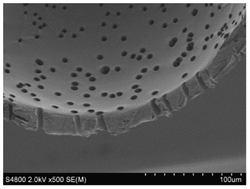The development of reliable systems for testing new compounds for use in the pharmaceutical industry has been a challenging task to date and the concept of a 3D, organotypic cell culture is emerging as a serious alternative to traditional 2D cell cultures or animal testing. We developed a biocompatible 3D cell culture environment that enables the continued existence of cells in a polycarbonate scaffold structure optionally housed in a perfusable bioreactor system. This article focuses on scaffold-based 3D cultivation strategies of biopsy-derived primary human hepatocytes. Cells were examined for whole genome gene expression and for basic cytological parameters. Examining gene networks by Illumina Pathways Analysis revealed that genes associated with metabolic functions are predominantly upregulated under perfusion. Further, we observed individually expressed profiles, which were also reflected by basic cytological parameters such as metabolic activity, albumin production and urea synthesis. With respect to their biotransformation capability, we hypothesize that a perfused 3D culture creates better conditions for the maintenance of primary hepatocytes. For more standardizable experiments with human hepatocytes, we propose the use of a hepatocyte model immortalized by transduction procedures.

